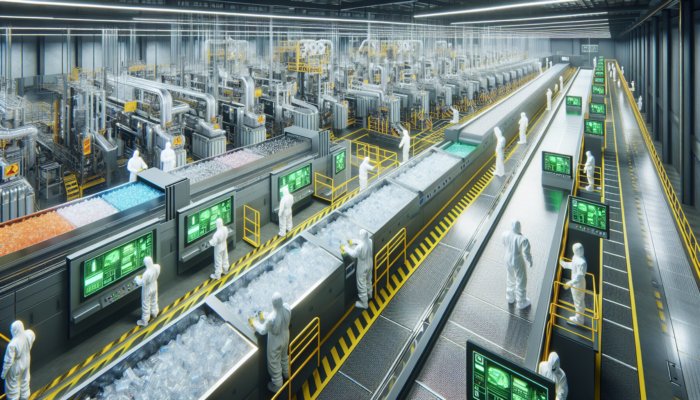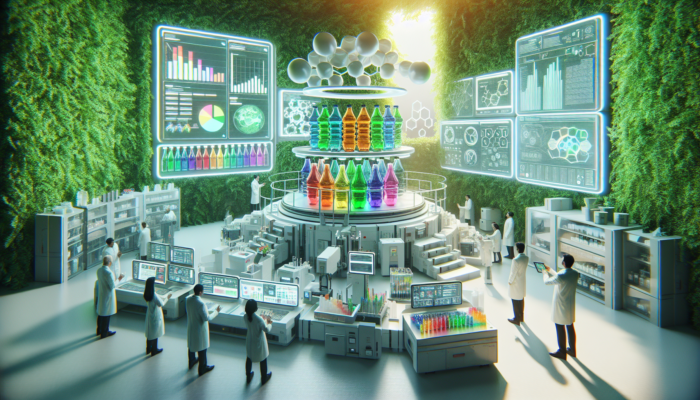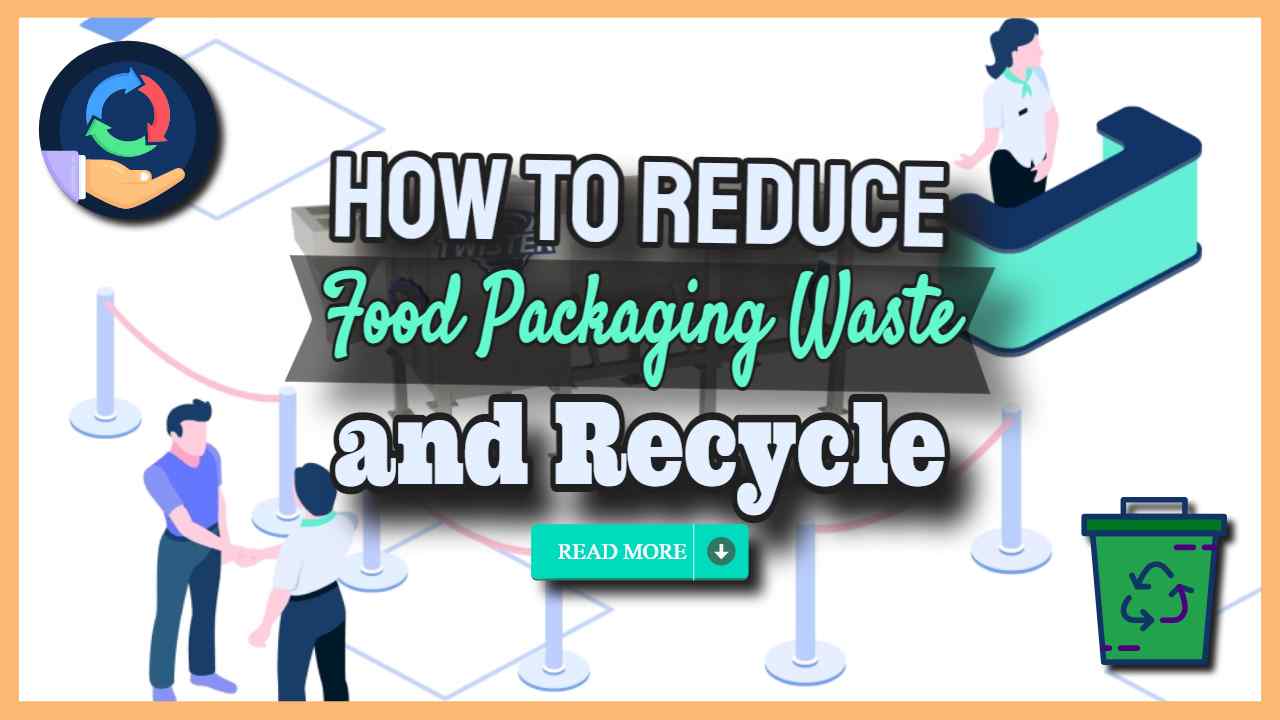Embrace Sustainable Grilling with Eco-Friendly Materials and Practices
Transform Your BBQ Experience by Using Reusable Grilling Tools

Adopting reusable grilling tools is a vital strategy for minimizing the environmental footprint associated with BBQs and significantly reducing packaging waste. By choosing durable stainless steel spatulas, tongs, and grill brushes, you not only elevate your grilling experience but also play a crucial role in decreasing reliance on disposable utensils that end up in landfills. These premium tools ensure superior performance and longevity, outlasting their single-use counterparts while requiring fewer replacements. This choice not only proves to be a cost-effective solution for your budget but also aligns perfectly with your commitment to environmental stewardship, enhancing both your cooking and ecological impact.
Moreover, consider incorporating silicone brushes or natural fiber scrubbers into your BBQ toolkit. These eco-friendly alternatives are not only resilient and easy to clean but also help lessen the adverse environmental effects typically tied to plastic products. When shopping for grilling tools, prioritize brands that prioritize sustainability in their manufacturing processes, ensuring that every component of your BBQ—from cooking to cleanup—reflects your dedication to eco-friendly practices and sustainable living.
Enhance Your BBQ Gatherings with Compostable Plates and Utensils
Transitioning to compostable plates and utensils is an impactful way to diminish the environmental impact of your outdoor gatherings. These innovative products are designed to decompose naturally, alleviating the burden on landfill systems and contributing to a healthier planet. When selecting compostable items, ensure they are certified by reputable organizations such as ASTM International, guaranteeing adherence to rigorous compostability standards.
Popular options include plates crafted from bamboo or sugarcane, as well as utensils made from plant-based materials. These items not only fulfill their purpose during your event but also enrich the soil when disposed of properly. To maximize the efficiency of these materials, take the time to educate your guests about the correct disposal practices, thereby fostering a more eco-conscious atmosphere at your gatherings and enhancing the overall experience.
Prioritize Eco-Friendly Packaging Choices for Your BBQ Products
The packaging used for BBQ products plays a significant role in waste generation. By choosing items that come in minimal or recyclable packaging, you can drastically reduce waste right from the start. Look for BBQ seasonings, sauces, and marinades packaged in glass containers, which are recyclable and far more environmentally friendly than their plastic counterparts.
When purchasing meats or vegetables, consider supporting local farmers or markets that utilize sustainable packaging methods. This choice not only diminishes packaging waste but also bolsters your local economy. By intentionally selecting products with a focus on eco-friendly packaging, you contribute to a larger movement towards environmental sustainability in your community, encouraging others to follow suit.
Implement Proven Waste Reduction Strategies for Your BBQ Events
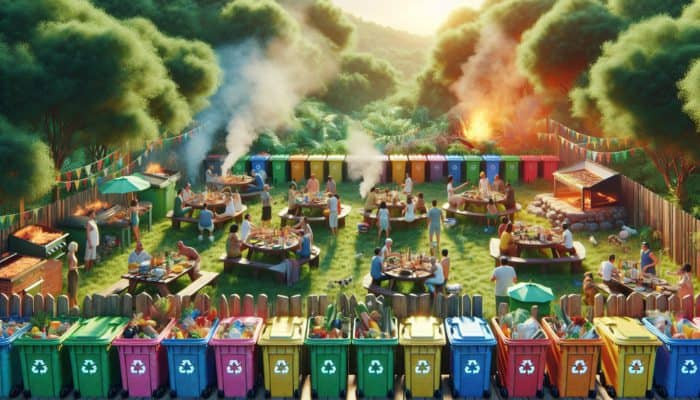
Effective Strategies to Minimize Food Waste at Your BBQ
Reducing food waste is essential for hosting a sustainable BBQ, and thoughtful planning can yield remarkable results. Begin by crafting a menu that aligns with your guests’ appetites and preferences, ensuring you prepare only what is necessary. Any leftover food can be creatively repurposed into new meals or snacks, further cutting down on waste while promoting resourcefulness and culinary creativity.
Here are additional strategies you can adopt to effectively minimize food waste during your BBQ:
- Design your menu based on guest preferences to prevent over-preparation.
- Transform leftovers into new dishes, such as salads or sandwiches.
- Offer smaller portion sizes, allowing guests to return for seconds as desired.
- Encourage a “clean plate” rule to motivate guests to finish their servings.
By actively managing your food offerings, you contribute to a culture of waste consciousness that benefits both the environment and your local community, fostering responsible consumption practices.
Best Practices for Effectively Setting Up Recycling Stations at Your BBQ
Creating an organized waste management system at your BBQ is crucial for promoting proper disposal habits among your guests. Setting up clearly labeled recycling stations throughout your event helps attendees easily differentiate between recyclable and non-recyclable materials. Utilize vibrant colors and clear signage to visually guide guests toward the correct waste disposal options, ensuring that recycling becomes a straightforward task.
Be sure to provide separate bins designated for food waste, recyclables, and general trash. This method simplifies the disposal process for your guests while significantly increasing the likelihood that materials will be recycled appropriately. If possible, include a compost bin for food scraps to further minimize landfill waste. Engaging your guests in these sustainable practices fosters a community-driven commitment to waste reduction, encouraging a shared sense of environmental responsibility.
Encouraging Guests to Bring Their Own Containers for Leftovers
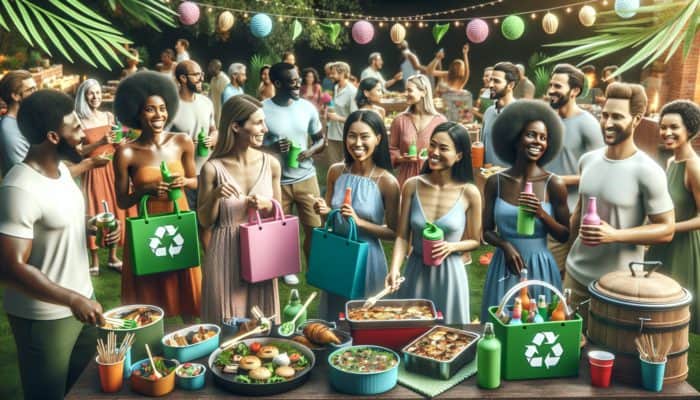
Motivating your guests to bring their own reusable containers for leftovers is a practical and impactful method for minimizing waste at your BBQ. This practice reduces reliance on disposable containers and cultivates a culture of sustainability among your attendees. When sending invitations, include a friendly note encouraging guests to bring their own containers, highlighting the environmental advantages of this initiative.
You can also designate a specific area for leftovers, where guests can conveniently transfer food into their containers. This small yet effective action can considerably reduce the need for disposable items, underscoring the importance of being mindful of waste. Promoting the habit of reusing containers can inspire lasting changes in how individuals approach waste in their everyday lives, making a positive environmental impact long after the BBQ concludes.
Understanding the Value of Reusable and Biodegradable Products for Your BBQ
Incorporating reusable and biodegradable products into your BBQ setup is a powerful approach to lessen your environmental footprint. Beyond reusable utensils and plates, consider replacing disposable paper napkins with cloth alternatives. Encourage your guests to wash and reuse items throughout the event, reinforcing your commitment to sustainability.
Furthermore, integrating biodegradable products—such as cups and straws made from plant-based materials—into your gathering provides an eco-friendly alternative that decomposes naturally without leaving harmful residues. By advocating for these sustainable products, you not only reduce the environmental impact of your BBQ but also inspire your guests to adopt similar eco-conscious practices in their daily lives, fostering a broader culture of sustainability.
Gain Expert Insights on Effective BBQ Waste Reduction Techniques
Real-World Examples of Successful Waste Reduction Initiatives
Numerous BBQ events have made significant strides in reducing packaging waste through innovative strategies and best practices. A noteworthy example comes from a community BBQ event held in Portland, Oregon, where organizers implemented a zero-waste approach. By exclusively using compostable or reusable items and providing educational resources about proper disposal, they achieved an impressive waste reduction of over 70%.
Key strategies that contributed to this initiative’s success included:
- Collaborating with local chefs to create a menu featuring seasonal and locally sourced ingredients.
- Establishing comprehensive waste stations for recycling and composting.
- Partnering with local businesses to sponsor eco-friendly products.
- Conducting pre-event workshops to educate attendees about waste reduction techniques.
These initiatives not only mitigate environmental impact but also foster community engagement and awareness, illustrating that collective efforts can lead to meaningful change.
Actionable Steps to Implement Waste Reduction in Your BBQ
Transitioning to a more sustainable BBQ may seem daunting, but several actionable steps can facilitate this change. Begin by evaluating your current practices and identifying areas for improvement.
Here are practical steps you can take to start reducing BBQ packaging waste:
- Choose local suppliers who prioritize sustainable packaging methods.
- Utilize digital invitations to minimize paper waste.
- Host a potluck-style BBQ where guests bring dishes in reusable containers.
- Offer incentives for guests who bring their own utensils and plates.
These strategies are simple yet effective, allowing anyone to adopt sustainable practices without excessive effort. Consistently implementing these changes can cultivate a culture of sustainability at BBQs and beyond, making a lasting impact on your community.
Analyzing the Environmental Impact of Your BBQ Events
Reducing BBQ packaging waste has profound implications for environmental health. Each year, millions of tons of plastic and packaging waste are discarded in landfills, contributing to pollution and posing risks to wildlife. Research shows that minimizing such waste can significantly reduce greenhouse gas emissions, thereby improving air and water quality.
Moreover, by embracing sustainable practices at BBQs, we conserve vital resources like water and energy, contributing to the preservation of a healthier ecosystem. A community dedicated to waste reduction at social events can inspire broader movements, leading to stronger advocacy for environmental sustainability. The evidence is clear: every small effort counts towards a larger impact that benefits our planet.
Understanding the Benefits of Reducing BBQ Packaging Waste
How Waste Reduction Contributes to Environmental Protection
Minimizing BBQ packaging waste is essential for protecting natural resources and promoting a healthier environment. By decreasing the volume of waste directed to landfills, we significantly lower pollution levels and support biodiversity. Each small action, whether it’s choosing compostable utensils or setting up recycling stations, plays a part in a larger movement centered on environmental sustainability.
In addition, practicing waste reduction helps conserve water and energy, as reduced packaging often correlates with lower overall resource consumption. It is imperative that we take actionable steps today to secure a cleaner, greener planet for future generations to inherit and enjoy.
Financial Advantages of Implementing Sustainable Practices
Adopting waste reduction strategies can indeed lead to substantial cost savings. By utilizing reusable items, you eliminate the ongoing costs associated with purchasing disposable plates, cups, and utensils for each gathering. Additionally, buying food items in bulk often results in lower per-unit prices, further enhancing savings.
Over time, these minor adjustments can accumulate, leading to a noticeable reduction in overall BBQ expenses. Furthermore, many communities offer incentives for reducing waste, such as lower waste disposal fees, providing an additional financial benefit. Sustainable practices not only improve environmental health but can also bolster your budget, making them a smart choice for any BBQ host.
Enhancing Community Health Through Sustainable Practices
Implementing waste reduction strategies can significantly boost community health by fostering cleaner public spaces and reducing exposure to harmful chemicals often found in plastics. When BBQ gatherings prioritize eco-friendly practices, they cultivate a sense of cleanliness and responsibility, promoting a healthier environment for all participants.
Communities that engage in sustainable practices often experience a heightened sense of camaraderie and shared purpose, leading to increased public involvement in environmental initiatives. Cleaner spaces mitigate health risks associated with pollution, benefiting both physical and mental well-being. A commitment to reducing waste at BBQs can result in broader improvements in community health and well-being.
Selecting the Right BBQ Equipment for Sustainability
The Importance of Investing in Durable Grills for Your Outdoor Cooking
Investing in durable grills is a crucial step in minimizing waste associated with BBQ equipment. High-quality grills made from stainless steel or cast iron are designed to last for years, significantly reducing the necessity for replacements. The frequent disposal of cheaper grills contributes to landfill overflow, making durability a critical factor in your purchasing decisions.
When exploring grill options, seek brands that offer warranties, as this often indicates a commitment to quality and longevity. Additionally, consider models that provide versatile cooking options, allowing you to prepare a diverse array of meals with a single appliance. This versatility further reduces the need for multiple cooking devices, thereby minimizing waste and enhancing overall efficiency.
Enhancing Your BBQ Experience with Reusable Grill Mats
Utilizing reusable grill mats presents an innovative solution for waste reduction during BBQs. These mats prevent food from sticking while eliminating the need for disposable aluminum foil, often used for grilling. Made from durable materials, reusable grill mats are easy to clean and can be reused multiple times without sacrificing quality.
By incorporating grill mats into your cooking routine, you can enhance your culinary experience through improved heat distribution and easy food release. Opt for mats that are free from harmful chemicals and safe for direct contact with food. This small investment not only reduces waste but also elevates the overall quality of your grilling experience, making it a smart choice for environmentally conscious grillers who seek to minimize their impact.
The Benefits of Choosing Energy-Efficient BBQ Models
Selecting energy-efficient BBQ models offers significant advantages for both the environment and your cooking expenses. These grills are specifically engineered to consume less fuel, resulting in lower emissions during cooking. Look for models that incorporate energy-saving technologies, such as efficient heat distribution systems or solar capabilities.
Choosing energy-efficient grills not only lessens your ecological footprint but can also lead to reduced utility bills. By being mindful of energy consumption, you contribute to a cleaner planet while enjoying your outdoor cooking experiences. The long-term benefits of selecting energy-efficient models far outweigh any initial costs, making it a wise investment for environmentally conscious grilling enthusiasts.
Maximizing Efficiency with Versatile BBQ Accessories
Selecting versatile BBQ tools and accessories can significantly reduce clutter and minimize waste. Multi-functional tools, such as a spatula that doubles as a meat thermometer, not only save space but also decrease the number of disposable items required. When choosing accessories, prioritize those designed for multiple uses, like a grill basket that accommodates various food types.
Incorporating versatile accessories into your BBQ setup streamlines the cooking process and increases efficiency. This allows you to focus more on enjoying the experience rather than managing an array of tools. With fewer items to clean and maintain, you also minimize the environmental impact associated with excessive production and waste, fostering a more sustainable BBQ environment that aligns with your eco-friendly goals.
Educating Others on Waste Reduction at BBQs
Engage Your Community Through Workshops and Demonstrations
Hosting workshops and live demonstrations at BBQ events provides an interactive platform to educate guests on waste reduction techniques. By offering hands-on experiences, participants can learn directly how to effectively implement sustainable practices. Consider including interactive sessions where guests can practice creating compostable plates or utilizing reusable utensils, reinforcing the educational element of your event.
By creating a fun and educational atmosphere, you impart valuable knowledge while inspiring attendees to incorporate these practices into their own gatherings. The more individuals comprehend the impact of their choices, the more likely they are to make environmentally conscious decisions in the future, creating a positive ripple effect throughout their communities.
The Role of Social Media in Promoting Waste Reduction
Leveraging social media platforms to share tips and strategies for reducing BBQ packaging waste can significantly expand your outreach and impact. Create engaging content that highlights your sustainable BBQ practices, incorporating visuals of eco-friendly products and effective waste reduction techniques. Consider hosting online challenges that encourage followers to showcase their own efforts in waste reduction, fostering a sense of community and shared purpose.
By crafting an engaging narrative around waste reduction, you build a community of motivated individuals eager to adopt similar practices. Social media serves as a powerful tool to amplify your message and inspire others to join the movement towards sustainability, cultivating a collective commitment to environmental responsibility.
Enhancing Your Impact Through Collaboration with Local Organizations
Partnering with local environmental organizations can significantly strengthen your efforts to raise awareness about waste reduction at BBQs. Collaborations not only provide additional resources but also lend credibility to your initiatives. Together, you can organize community events focused on sustainability, offering educational sessions and hands-on activities that resonate with participants.
By working in partnership, you can reach a broader audience and create a more substantial impact. Local organizations often have established networks, making it easier to disseminate your message and encourage community participation in waste reduction strategies, thereby amplifying your overall effectiveness in promoting sustainability.
Developing Educational Materials on Waste Reduction
Creating educational materials, such as brochures, posters, and guides centered on waste reduction, can effectively disseminate valuable information. Distributing these materials during events or making them available online serves as lasting reminders of the importance of sustainability. Ensure that the content is visually appealing and straightforward, emphasizing actionable steps individuals can take to contribute to waste reduction efforts.
Furthermore, including case studies or success stories can inspire others and demonstrate the tangible impact of waste reduction initiatives. Providing clear, easy-to-follow instructions empowers individuals to implement these strategies in their own BBQ gatherings and beyond, fostering a culture of sustainability within their communities and encouraging collective action toward environmental responsibility.
Continuously Improve Your Waste Reduction Efforts
The Importance of Tracking Your Waste Output
Regularly monitoring the amount of waste produced at your BBQs is essential for pinpointing areas that require improvement. By maintaining a record of waste output, you can analyze trends and identify specific types of waste that need addressing. This data-driven approach enables you to make informed decisions regarding your waste reduction strategies, promoting ongoing enhancement of your practices.
Consider employing a waste audit checklist to categorize waste into recyclables, compostables, and non-recyclables. This method provides valuable insights into the effectiveness of your practices and highlights areas that may require adjustment. By consistently monitoring and refining your waste management techniques, you can enhance your BBQ sustainability efforts over time, leading to more effective practices in future events.
Utilizing Feedback to Adjust Your Strategies
Gathering feedback from guests regarding your waste reduction efforts is crucial for continual improvement and effectiveness. After each BBQ, consider distributing a brief survey to gauge participant reactions to the sustainability practices implemented. Ask specific questions about what worked well and what areas could be improved to gain valuable insights.
Using this feedback allows you to fine-tune your strategies, making future BBQs even more sustainable and impactful. Engaging guests in this process fosters a sense of community, as they feel their opinions are valued and considered, leading to stronger participation and commitment to waste reduction initiatives.
Celebrate Your Achievements and Set New Goals for Improvement
Recognizing milestones in your waste reduction journey is vital for maintaining motivation and enthusiasm. Celebrate your successes, whether it’s achieving a specific percentage reduction in waste or introducing a new sustainable practice. Share these accomplishments with your guests to inspire them to participate in setting new goals for upcoming BBQs.
Establishing new objectives can keep the momentum going and encourage ongoing improvements. Consider organizing a follow-up event where you showcase your progress and encourage others to join you in further reducing BBQ packaging waste, fostering a culture of collective responsibility and sustainability throughout your community.
The Importance of Regularly Reviewing Your Waste Reduction Plan
Periodically assessing your waste reduction plan is essential to ensure its continued effectiveness and relevance. Reflect on which strategies have proven successful and what challenges you’ve encountered along the way. Based on your observations and guest feedback, make necessary adjustments to your plan to address any shortcomings and maintain its effectiveness.
Updating your strategy keeps it pertinent and impactful, allowing for the integration of new ideas and practices as they emerge. A flexible waste reduction plan enables you to adapt to changing circumstances and continuously inspire sustainable practices within your community, fostering an ongoing commitment to environmental responsibility and collective action.
Engaging and Educating Participants on Waste Reduction
Educating guests about the significance of waste reduction is crucial for cultivating a culture of sustainability. Use your BBQ events as a platform to communicate the benefits of responsible waste management, from environmental improvements to community health enhancements. Engage attendees in discussions about their own practices and encourage them to share their experiences, creating an interactive environment that fosters learning.
Building a community dedicated to sustainable BBQ practices can initiate a ripple effect, leading to broader changes in waste management behavior. By fostering an engaging and informed atmosphere, you amplify the overall impact of your efforts, making sustainability a shared objective among all participants and driving collective action towards a cleaner environment.
Frequently Asked Questions (FAQs)
What are some simple methods to reduce BBQ waste?
Simple strategies include utilizing reusable grilling tools, serving food on compostable plates, establishing recycling stations, and encouraging guests to bring their own containers for leftovers.
Is it acceptable to use regular plates and utensils instead of compostable ones?
While traditional plates and utensils can be used, opting for compostable or reusable options significantly reduces waste and aligns with sustainability efforts.
How do I educate my guests about waste reduction practices?
You can educate your guests by offering information through workshops or demonstrations, distributing educational materials, and sharing tips via social media platforms.
What happens to compostable plates in landfills?
In landfills, compostable plates may not break down effectively due to a lack of oxygen and appropriate conditions, highlighting the importance of proper disposal in composting facilities.
Are there financial benefits associated with reducing BBQ waste?
Yes, reducing waste can lead to significant savings on disposable items and potentially lower waste disposal fees, making it financially advantageous.
How can I organize a zero-waste BBQ event?
Begin by planning a menu that minimizes food waste, sourcing local ingredients, utilizing compostable products, and setting up efficient recycling stations to promote sustainability.
What materials are best for reusable BBQ tools?
Opt for stainless steel, silicone, or high-quality plastic that is durable and dishwasher-safe, ensuring they withstand many BBQ events without wear.
How can my community benefit from waste reduction efforts?
Waste reduction initiatives can lead to cleaner public spaces, improved community health, and a stronger sense of community responsibility and engagement around sustainability.
What should I do with leftover BBQ food?
Leftover BBQ food can be stored in reusable containers, shared with guests, or creatively repurposed into new meals, significantly reducing waste.
Is it difficult to implement sustainable practices at BBQs?
Implementing sustainable practices can be straightforward with thoughtful planning and a focus on education, ensuring that everyone involved understands their roles in reducing waste.
Connect with us on Facebook for more tips!
The Article How to Reduce BBQ Packaging Waste: Eco-Friendly Tips appeared first on https://pitmastersarsenal.com
The Article Reduce BBQ Packaging Waste with These Eco-Friendly Tips Was Found On https://limitsofstrategy.com
